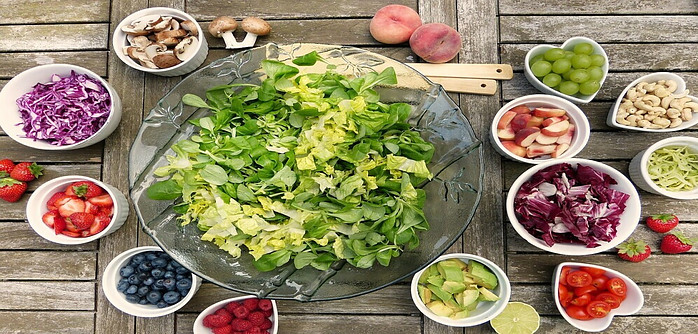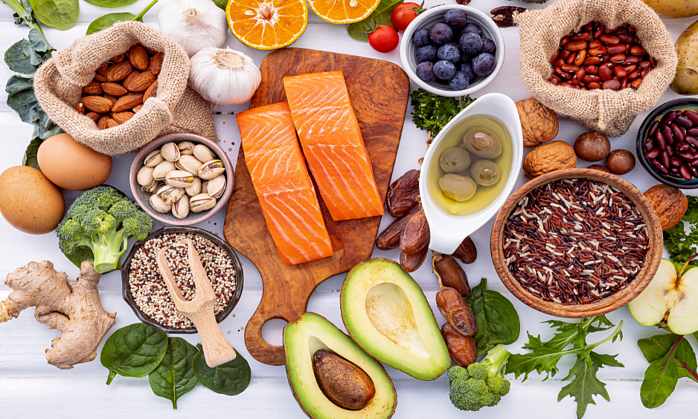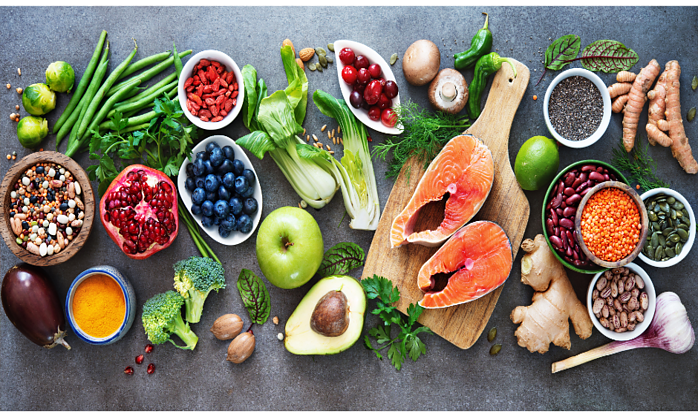Have you ever wondered if there’s a secret to losing weight successfully? Well, let me assure you, understanding the basics isn’t just about counting calories; it’s about knowing how your body works. I’m going to walk you through the science of weight loss, which basically boils down to energy balance. In simple terms, you need to burn more calories than you consume to lose weight.
Setting healthy and achievable goals is critical. I’m here to help you craft targets that are realistic and tailored to your lifestyle. This isn’t just about shedding pounds; it’s also about maintaining a healthy weight for life. And this means steering clear of quick fixes. You’re going to find out why crash diets don’t work and how they can actually do more harm than good, leading to a cycle of yo-yo dieting that takes a toll on your body.
Understanding the pitfalls of crash diets is crucial. These diets often promise rapid results, but they typically lack essential nutrients and aren’t sustainable in the long term. They can leave you feeling hungry and deprived, which isn’t conducive to making lifelong changes to your eating habits. In my opinion, a slow and steady approach is more effective for long-term success.
So this brings the question, what’s a better way? Transitioning into section two, we’ll take a closer look at constructing a balanced diet that can support your weight loss journey successfully. You’ll see how a high-protein diet not only helps keep you full but also plays a pivotal role in managing your weight and building muscle – because losing weight is not just about less; it’s about more of the right stuff.
The Balancing Act: Formulating a Nutrient-Rich Weight Loss Plan
You’re going to find out why balance is so crucial when designing a weight loss diet. It isn’t just about cutting back on calories; it’s also about ensuring that your body gets the full spectrum of nutrients it needs to function optimally.
In my opinion, a well-rounded diet is the cornerstone of sustainable weight loss. This includes a good mix of macronutrients – carbohydrates, proteins, and fats – as well as essential vitamins and minerals. Don’t worry too much about following a rigid plan; choose something that resonates with your lifestyle.
Eat natural unprocessed foods like red meat, chicken, fish, nuts, fresh fruits and veggies, beans, eggs and some dairy. Reduce the amount of processed foods like breads, cakes, white rice, processed meats, fake vegan meats, ice cream etc. Avoid ultra processed foods like soft drinks, chips, chocolate, candy, sweetened breakfast cereals, packaged soups, chicken nuggets, hot dogs, fries and more.
As this is a nutrition plan that you will be doing for the rest of your life it must be one that you will stick to. If you have a sweet tooth like I do eat something that will satisfy that hunger. A small yogurt or a couple of biscuits isn’t going to hurt a whole days healthy eating just don’t overdo it.
Now, when it comes to protein, research has repeatedly shown its importance, especially in a weight loss context. Why? Because proteins can help you feel full for longer and maintain lean muscle mass as you shed pounds. You can always adjust your approach down the road, but starting with a protein-focus can give you an early edge in your weight loss journey.
Your meals should not only be nutritionally complete but also varied to prevent diet fatigue. From vibrant veggies to whole grains, and healthy oils, there’s a lot of opportunity in selecting foods that not only nurture your body but also excite your palate.
Protein as Your Ally: Leveraging Macronutrients for Weight Loss
You’re going to find out about how crucial protein is in your weight loss journey. It’s not just a building block for muscles; it’s a key player in shedding unwanted pounds. Protein has a higher thermic effect than fats or carbohydrates, which means the body expends more energy to digest it, thus potentially improving your metabolism over time.
In my opinion, the magic of protein lies in its ability to keep you feeling full longer. Have you ever noticed that after eating a chicken breast or a bowl of lentils, you feel more satisfied for a longer period? That’s because protein helps regulate the hormones that control appetite, like ghrelin and leptin.
Including proteins in every meal doesn’t just stabilize your hunger pangs; it also helps protect your body’s lean muscle mass during weight loss. When you cut calories, your body could start using muscle for fuel if it’s not getting enough protein. That’s the strategy I like to leverage: maintain muscle while losing fat for a stronger, sleeker physique.
I really hope that you’re beginning to see why protein is so beneficent. And the best part? You’ve got a multitude of options. Eggs, meats, dairy products, legumes, nuts, and seeds are only the starting point. Each of these provides other critical nutrients your body needs for optimal function, aligning perfectly into your weight loss agenda.
This isn’t just about adding protein willy-nilly, though. You need to consider your unique dietary needs and preferences. This moves us smoothly into the next section, where I’ll show you how to calculate your individual protein and caloric requirements. Don’t worry too much about it being complicated; we’ll break this down into simple, actionable steps.
Tailored Nutrition: Determining Your Personal Caloric and Protein Targets
Your body is unique, and so are your dietary needs. Understanding this is essential when you’re aiming for weight loss. You’re going to find out about how to calculate the amount of fuel your body requires and the protein quantities needed to support your goals.
Your Basal Metabolic Rate (BMR) is like the amount of gas an idle car needs to keep running. It represents the number of calories your body burns at rest to maintain vital functions. Then, take into account your Total Daily Energy Expenditure (TDEE) which considers all the activities you do during the day. Together, they give you the number of calories you need to maintain your current weight.
Don’t worry too much about crunching numbers yourself; there are several reliable online calculators that can help you estimate your BMR and TDEE. However, it’s always a good idea to cross-check this information with a healthcare professional for accuracy and personalized advice.
Once you know your daily caloric needs, you can set a target for weight loss. A common approach is to aim for a calorie deficit — consuming fewer calories than your TDEE, leading to gradual weight loss. Adjust your approach down the road as necessary, based on your progress and how you feel.
Calculating your protein needs is next. A rule of thumb is to consume between 0.6 to 0.8 grams of protein per pound of body weight, depending on your activity level and weight loss goals. Higher protein intake can be incredibly beneficial, as it can help maintain muscle mass and increase satiety, which can reduce overall calorie intake.
Remember, choose something that resonates with you. If you’re not a fan of number-crunching, professional dietitians can provide guidance and hassle-free meal planning customized just for you.
Cultivating Endurance: Exercise and Mindset in Weight Loss
So, you’ve tailored your diet to your individual needs, packing in the right balance of proteins and calories. Now, let’s talk about cementing those gains with exercise and the right mindset.
Regular exercise isn’t just a booster rocket for your weight loss journey; it’s the core engine. Cardio, strength training, HIIT you name it each plays a unique role in burning calories and shaping your physique. Choose something that resonates with you, because consistency is king.
But here’s the kicker: the true secret to lasting weight change isn’t just about what you do at the gym or on the plate. It’s also about what’s happening upstairs, in your mind. A can-do attitude, patience, and resilience can make or break your progress.
I’m going to let you in on a little secret: setbacks are part of the journey. Every stumble is a lesson, not a failure. Don’t worry too much about a bad day or even a bad week. Adjust, learn, and move forward. That’s the strategy I like to leverage.
Remember, your first attempt doesn’t need to be your last. Weight management is a long game. It’s about sustainable lifestyle changes creating habits that you can stick with, not just for a summer but for life.
So my question to you today is, are you ready to commit to the journey? Because this isn’t just about losing weight, it’s about gaining a whole new outlook on health and life. I really hope that you embark on this path with confidence and the knowledge that every step counts.
Thanks for dedicating time to understanding the essentials of a healthy weight loss plan. I’d love to hear your feedback or any successes and challenges you face along the way. Drop a comment, and let’s keep the conversation going.
What an incredibly informative and motivating piece on weight loss! Your holistic approach, addressing not just the mechanics of losing weight but also the importance of understanding one’s body, setting realistic goals, and cultivating a positive mindset, is truly commendable. Your piece is a comprehensive guide that not only educates but also inspires readers to approach weight loss as a journey toward a healthier and more fulfilling life. Thank you for sharing .
Thank you for commenting on my article Ela.